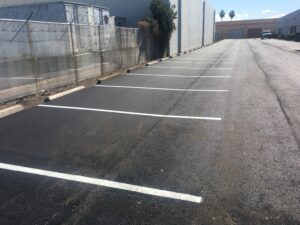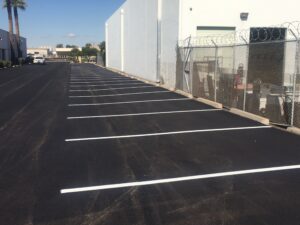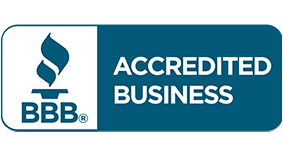Introduction: The Need for Line Striping
Doesn’t it feel terrific when you see a brand-new parking lot, as smooth as a slate, gets a fresh coat of line striping? Indeed, it does! But have you ever wondered why line striping is essential?
The Basics: The Asphalt Parking Lot
The Fresh Asphalt
Asphalt parking lots are a common sight, especially in commercial areas. Their durability and versatility make them an ideal choice for large parking areas. A freshly laid asphalt parking lot is a beauty to behold, a clean slate awaiting its final touch.
The Purpose of Asphalt
The asphalt serves a more significant purpose than just aesthetics—it’s designed for functionality and safety. It needs to be durable and capable of withstanding various loads and traffic patterns. However, it’s the addition of line striping that brings it to life and maximizes its usefulness.
Line Striping
The Need for Line Striping
Now you may ask, “What’s so special about a bunch of lines?” Line striping is more than just lines. It’s a form of communication, guiding drivers where to go and where to park.
The Process of Line Striping
Ever watched a newly paved parking lot being striped? The process is quite mesmerizing. It’s like watching an artist at work, meticulously crafting each line, ensuring symmetry and perfection.
The Process: Site Inspection and Preparation
Before any paint touches the asphalt, there’s a lot of groundwork. The surface is inspected for any imperfections that might affect the line striping, cleaned thoroughly, and prepared for the paint.
Marking the Layout
The Importance of Proper Layout
Ever noticed how neatly each parking space fits in a parking lot? Well, that’s not a coincidence! The layout is marked with precision, considering various factors like traffic flow, space utilization, and safety regulations. A well-planned layout ensures efficient space utilization and smooth traffic flow.
The Striping Process
The Striping Equipment
Have you ever wondered how those straight lines are achieved? It’s all thanks to the striping equipment. Modern striping machines are accurate and efficient, delivering sharp and consistent lines.
The Types of Paint
And let’s not forget the paint! Different types of paints are used, each with its unique characteristics. These include oil-based, water-based, and chlorinated rubber paints. Each has its advantages and disadvantages, and the choice depends on the specific requirements of the parking lot.
The Benefits: Improved Visibility
Line striping makes the parking lot more navigable. The brightly painted lines increase visibility, especially in low-light conditions, making it easier for drivers to locate parking spaces.
Enhanced Safety
Safety is paramount in any parking lot. Line striping designates pedestrian walkways and handicapped spots, and it clearly defines driving lanes, minimizing the risk of accidents.
Increased Parking Efficiency
Have you ever struggled to find a parking spot in an unmarked lot? It’s a nightmare, isn’t it? With line striping, parking spaces are clearly marked, allowing for maximum space utilization and avoiding unnecessary confusion.
Aesthetic Appeal
Lastly, let’s admit it—we all love a well-organized, neatly marked parking lot. It’s pleasing to the eye and gives a sense of order and cleanliness. So, line striping adds aesthetic appeal to the parking lot as well.
Conclusion
In essence, a brand-new asphalt parking lot getting freshly painted with line striping is a sight to behold. It’s not just about making the parking lot look pretty—it’s about functionality, safety, and efficiency. Next time when you see a freshly striped parking lot, you’ll appreciate the thought and effort that went into creating it.
FAQs
- What type of paint is best for line striping? Each type of paint has its unique characteristics and uses. The choice depends on the specific requirements of the parking lot.
- How often should a parking lot be re-striped? Depending on the wear and tear, parking lots should ideally be re-striped every one to two years.
- Can line striping be customized for each parking lot? Yes, line striping can be customized based on the needs of the parking lot, including the layout and traffic patterns.
- How long does it take to stripe a parking lot? The time taken depends on the size of the parking lot and the complexity of the layout. A professional team can usually complete the task in a day or two.
- What are the safety benefits of line striping? Line striping designates pedestrian walkways and handicapped spots, and clearly defines driving lanes, minimizing the risk of accidents.






Comments are closed